Goa is home to an ancient Hindu tradition, something most Indians are unaware of. Of all the Goan temples, none is more central to that tradition than the one at Mangeshi (also spelled Mangueshi), the eponymous ward in the village of Priol, deep in Goa‘s hinterland. Mangesh is the Goan name for Lord Shiva.
Upon their arrival in Goa in the 16th C, the Portuguese destroyed hundreds of Hindu temples in a savage frenzy of religious violence. Among them were the three great temples to Shiva: Saptakoteshwar, Ramnath, and Mangesh. The old lingas had to be retrieved and squirreled away for reconsecration in the relative safety of the jungle. The reinstall at Mangeshi took place circa 1560.
Each of these temples holds sway in the Goan imagination to this day, and the affiliation transcends religious divides. It is not uncommon to see young married Catholic couples at Mangeshi, for the Great Yogi is also the acknowledged Head of the Dept. of Fertility.
Mangeshi‘s cachet does not derive solely from its historical and religious significance. For long it has sheltered and nourished aspirants in music and dance, and from its mandapa have emerged some of the most distinguished names in Indian music. Dinanath Mangeshkar was born here and grew up in the shadow of the temple. His daughters Lata and Asha are known worldwide for their contributions. The great Indian classical master, composer & scholar Jitendra Abhisheki was born here, and his family has traditionally served as priests at the temple. Kesarbai Kerkar, from the nearby village of Keri, had her musical awakening here through the kirtans and bhajans she absorbed as a child.
Before it was powderized, the original temple of Mangesh was located in the village of Cortalim (also known as Kuththali or Kushasthali). The origins of the deity lie in antiquity. The Gavdas, a tribe of the earliest settlers in Goa, are said to have worshipped the form and still enjoy special dibs during rituals at the temple. The legend of Mangesh is in essence a tale of the love between Shiva and Parvati.
p. 19
Legend has it that once Shiva and Parvati were playing dice in their abode at Mount Kailas. Shiva kept losing, and in the last roll of the dice staked his heaven. Having lost that too, he had to leave the Himalayas. He wandered southwards and presently crossed the Sahyadri mountains and came to Kushasthali, now Cortalim, where Lopesh, his faithful devotee, entreated him to remain. Forlorn Parvati, now heartbroken without Shiva, left heaven and went in search of him. In the midst of a dense forest she came face to face with a huge tiger. Shiva had taught her an incantation, “He Girisha mamtrahi” – O Lord of the Mountains protect me – but she was so frightened that she lost her coherence and uttered the jumbled incantation, “Trahi mam Girisha”. Shiva, who had assumed the form of a tiger, instantly returned to his normal form. And then at a much relieved Parvati’s behest, he added Mam-Girisha to the many appellations he is known by. Which is also how the village where the temple is situated came to be eventually known as Mangeshi, an abbreviation of Mam-Girisha.
Given the limited space available on the premises, a Tilt-Shift lens was necessary to keep the vertical lines vertical in the photographs of the temple and its deepastambha. Canon’s remarkable TS-E 24L II lens was equal to the task.
A long view of the hilly, forested Mangeshi area on a misty monsoon morning.

Mangeshi
5D Mark II, 70-200L f/2.8 IS II
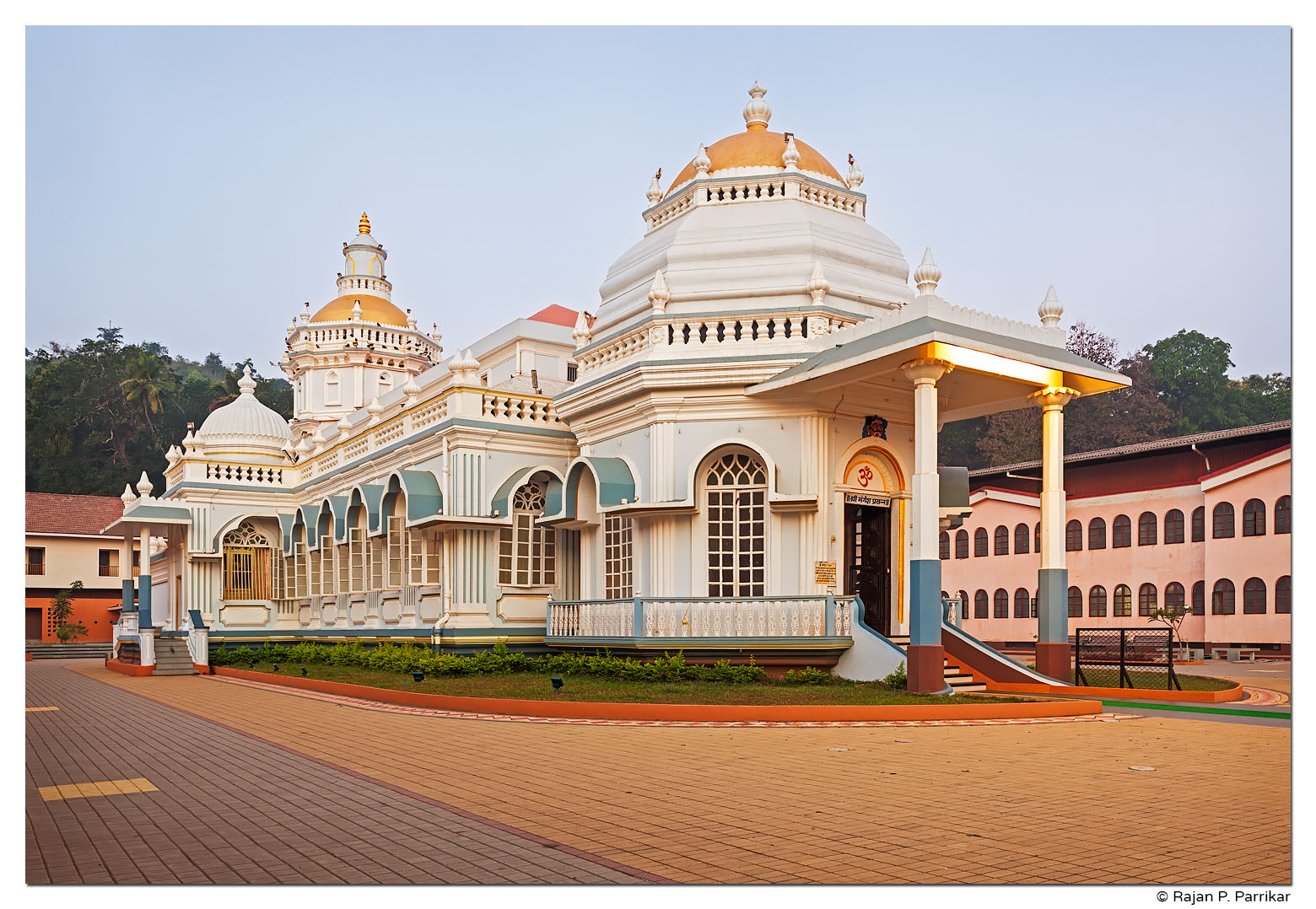
Mangesh Temple
5D Mark II, TS-E 24L II
The deepastambha (tower of lamps) is a characteristic feature of Goan temples.
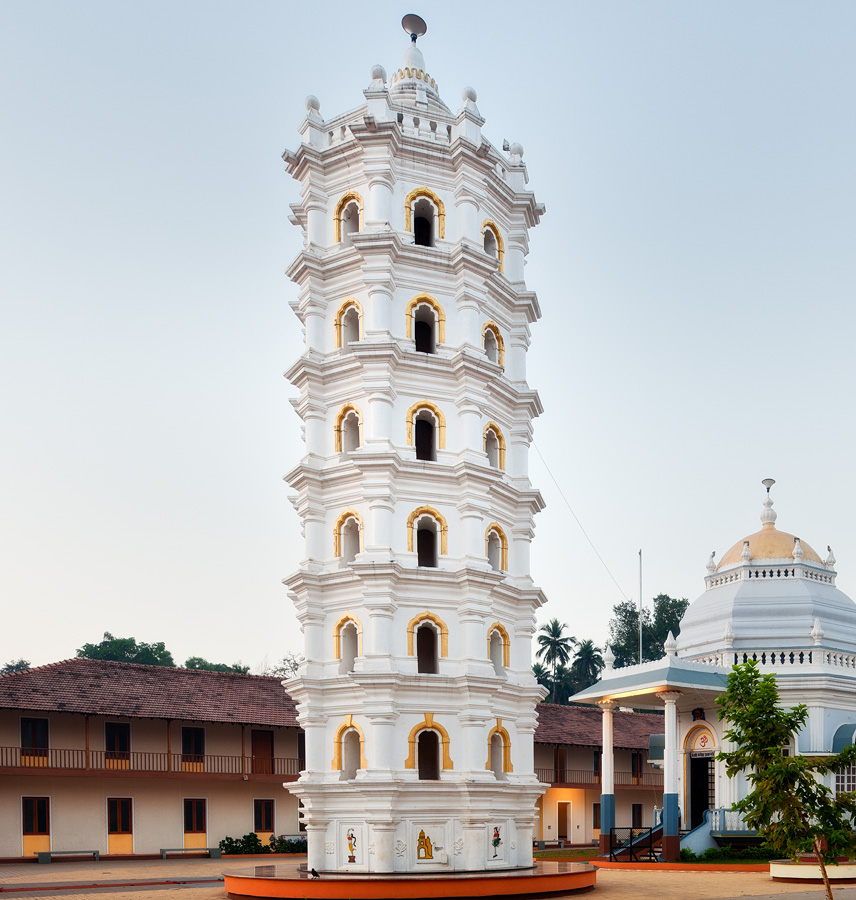
Deepastambha at Mangesh temple
5D Mark II, TS-E 24L II
This new form of Sri Mangesh cast in solid gold illustrates the avidya of modern Hindus. They don’t even know what it is that they are worshipping. Shiva is the exemplar of vairagya but the Goan boneheads have transformed him into a glittering tinseltown hero, no doubt an unintended reflection of their own attachment to coin.
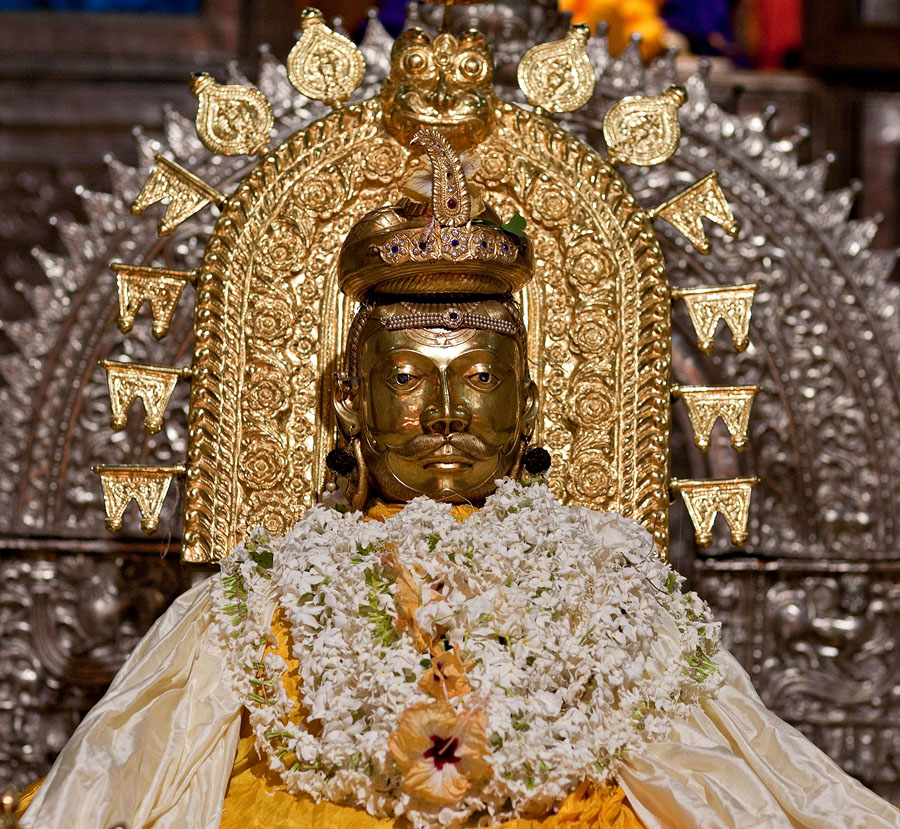
Sri Mangesh
5D, 85L II
This is a photograph of an old photograph (1925). Note that Mangesh is also spelled as Manguexa or Manguesh. The (orange) tower in the foreground is the naubatkhana where the shehnai and other musical instruments are played during temple ceremonies.
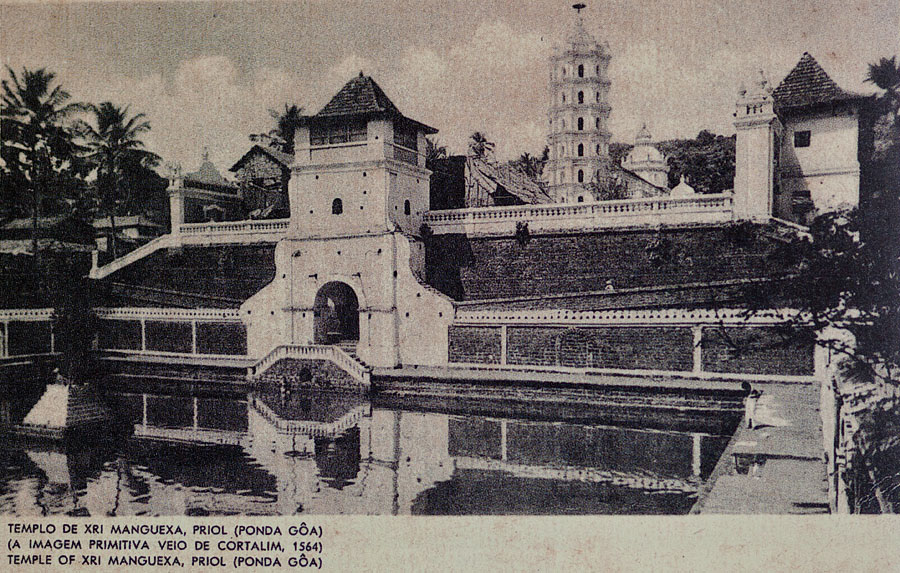
Temple tank circa 1925 (© Souza & Paul)
From “Postais Antigos do Estado da Índia” by João Loureiro
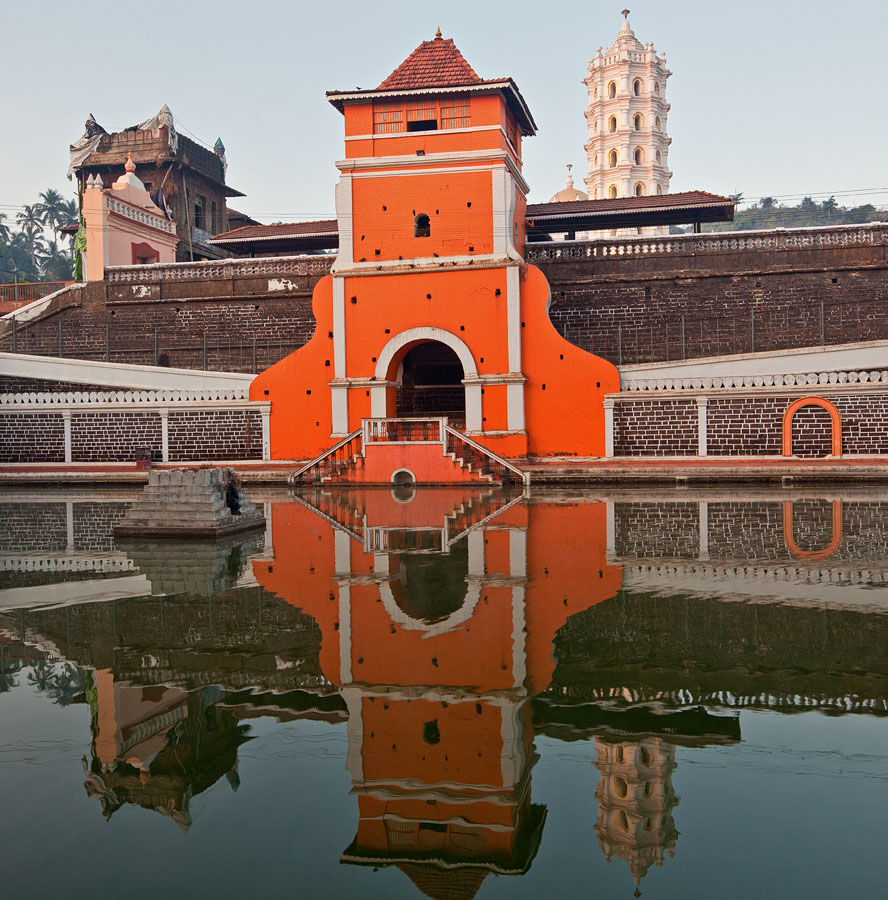
Temple tank today
5D Mark II, TS-E 24L II
This 16th C sculpture of Kalbhairav occupies a small shrine outside in the temple compound.
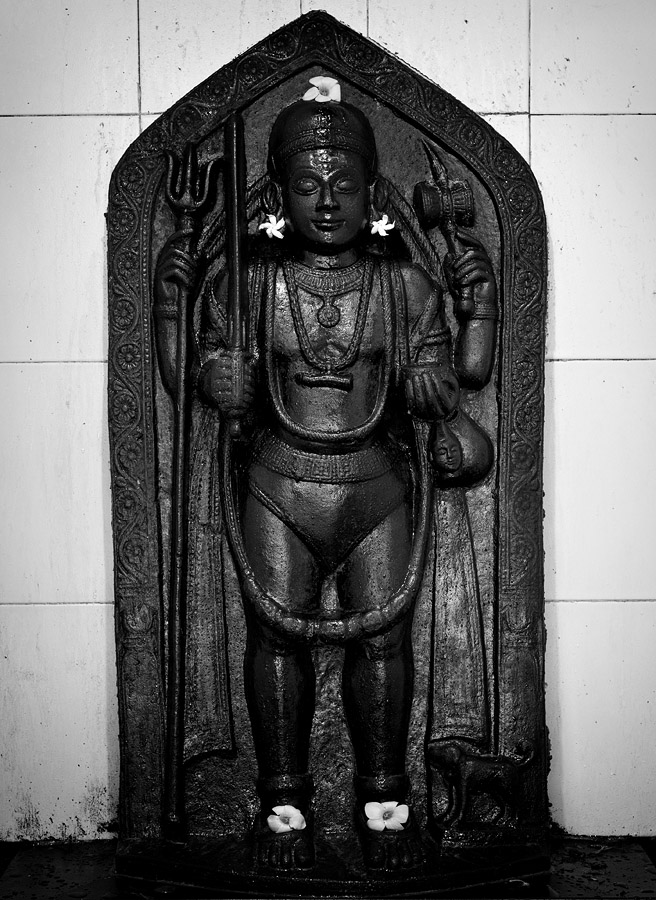
Kalbhairav outside the temple
5D Mark II, Zeiss ZE 50mm f/2 Makro Planar





Lord Manguesh is my Kuldaivat, i have been looking to get good HD photos ofLord Manguesh. I wanted to put it up in my home”Devara”. Is it possible that i get/pruchase the image from you.Eagerly awaiting your reply.
Best Regards.gautam Shenvi Bhedne
The photo graphs are excellent. Mangeshi is my Kuladevata. Is it possible to send me a high definition photo of Mangeshi for my home temple?
The only time I have visited Mangeshi is in the year 1991. I wish to visit it every year as it is the kuldaivat of my mother. I haven’t visited it for a long time. May lord mangesh complete all my wishes and desires.
Hi, me being a mahajan of shri mangesh didnt know this history of his origin..got to kno a lot from ur blog..Truly appreciate..
It is my sincere wish to visit and stay at Mangeshi and Shantadurga temples in goa. May god fulfill my wish and bless me !!!
I am curious about the etymology of Mangeshi. Before I scrolled down (where you cite its derivation from ma hi girish) I was certain it was “mangai” (Tamil for “woman”) + isha (lord). I’ll have to check DED to see if Mangai (as in woman) is also to be found in languages like Konkani and Tulu.
Ma hi girish seems implausible to me.
p.s. How about the Ramnath temple you mention? Does it exist? And why is He called Ramnath there?
The name “Mangirish” (of which Mangesh is presumably an apabhransha) is also common in Goa.
Yes, of course, the temple to Ramnath exists – it was relocated from its original site in Loutolim to the forest around 5 Kms from Mangeshi in the area now known as – you guessed it – Ramnathi. Here Shiva is Ramnath – Lord of Rama – because Rama is said to have called out his name (or prayed to the linga – I forget now) on his way to Lanka. Mitragotri says that the original linga of Ramnath was brought from Rameshwaram and cites a reference for it.
[…] here: Mangeshi Posted in Archive, General Tags: 70-200l f/2.8 is ii, archive, contributions, hinduism, […]